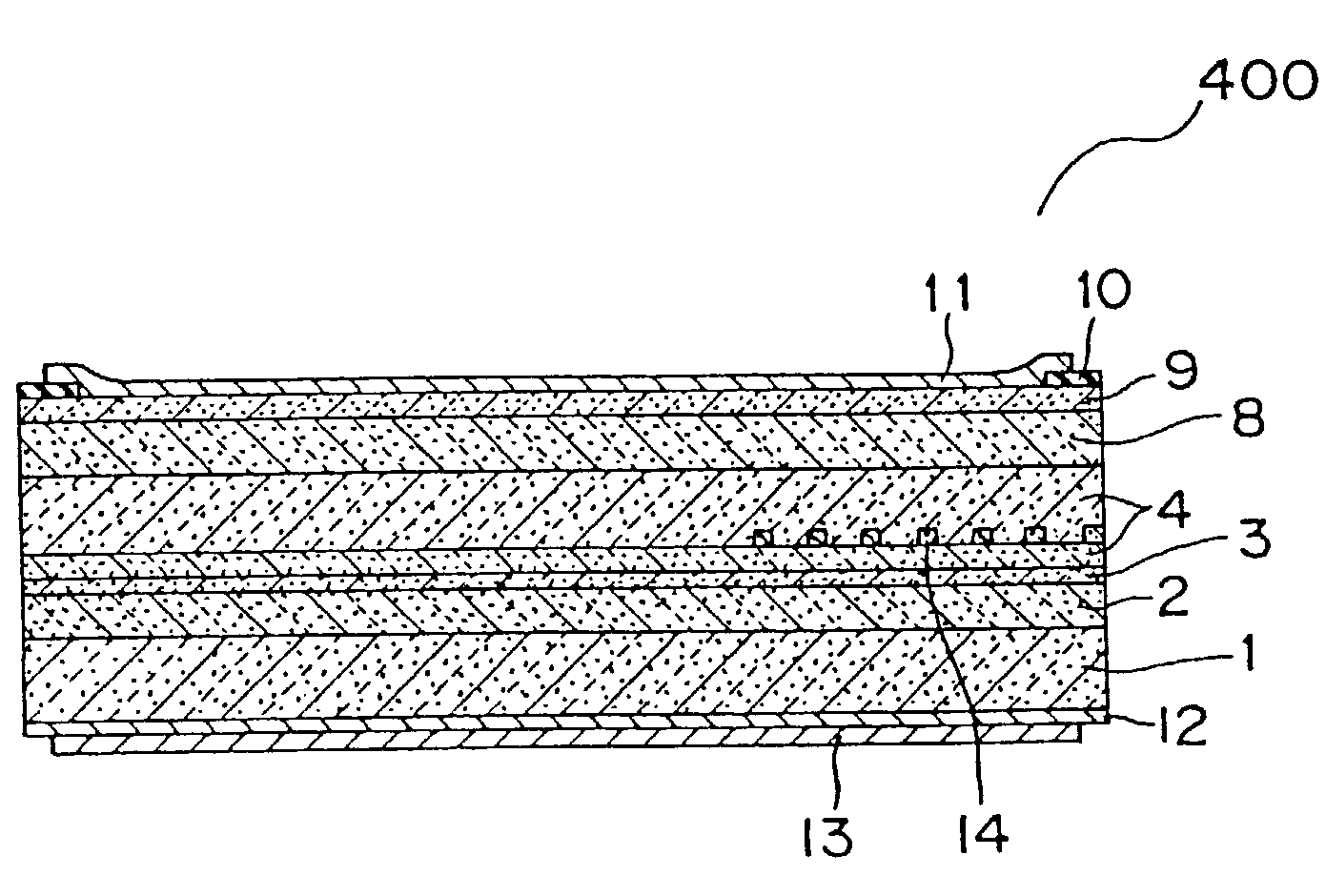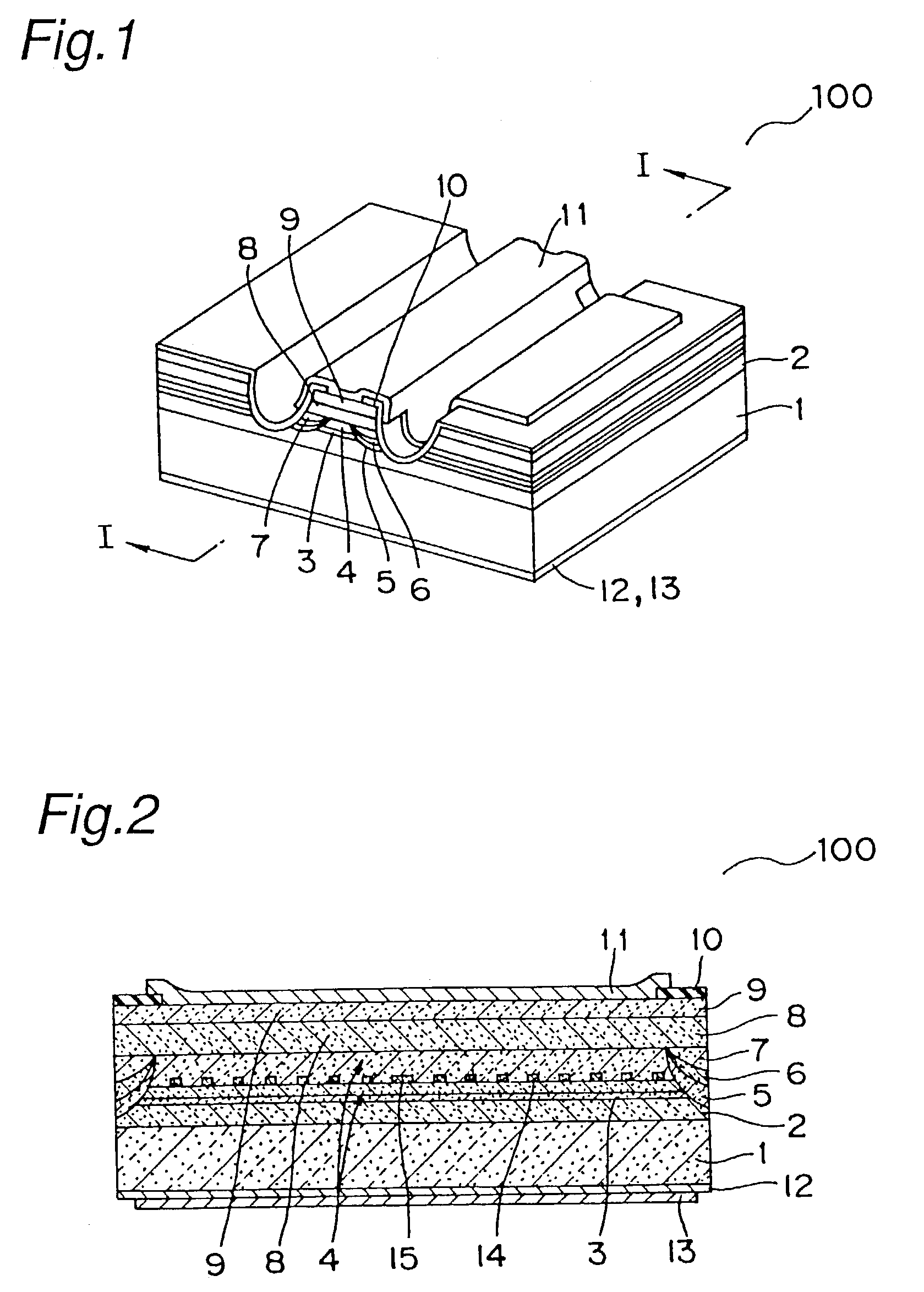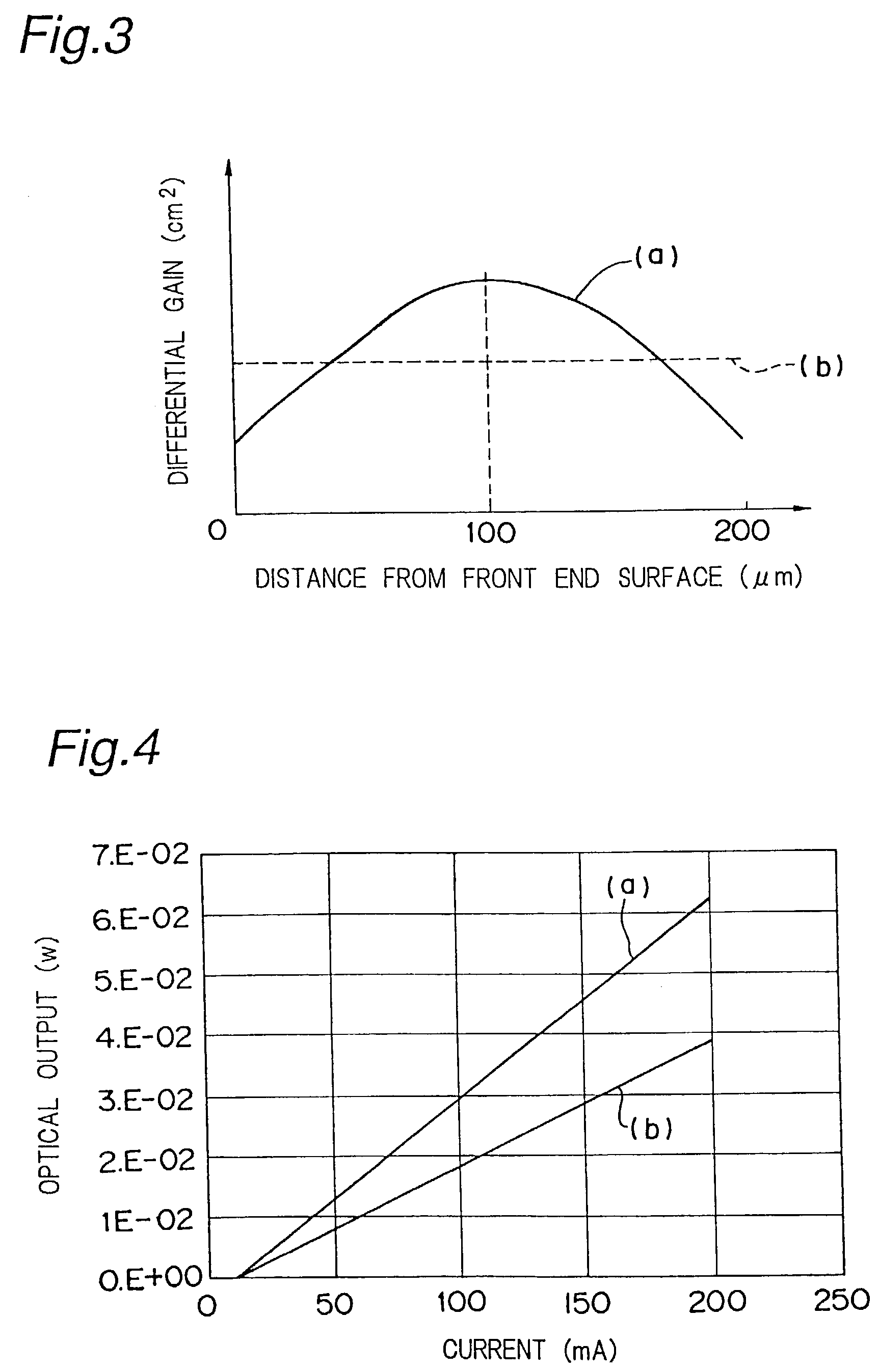Semiconductor optical device
a semiconductor and optical device technology, applied in the direction of semiconductor lasers, optical resonator shape and construction, active medium materials, etc., can solve the problems of waveguide instability, waveguide instability, linearity between current and optical output adversely affected, and the transverse mode of laser oscillation, etc., to reduce the variation of refractive index across the beam waveguide
- Summary
- Abstract
- Description
- Claims
- Application Information
AI Technical Summary
Benefits of technology
Problems solved by technology
Method used
Image
Examples
embodiment 1
[0039]FIG. 1 is a perspective view of a λ / 4-shifted distributed-feedback semiconductor laser device according to the first embodiment of the present invention. FIG. 2 is a cross sectional view taken along a line II—II of FIG. 1. In FIGS. 1 and 2, the same reference numerals denote the same elements.
[0040]With reference to FIGS. 1 and 2, in particular, the distributed-feedback semiconductor laser device 100 includes a substrate 1 of p-InP, on which a buffer layer (or first cladding layer) 2 of p-InP is formed. Formed on the buffer layer 2 is an active layer 3 formed as a multiple quantum well (MQW) layer of InGaAsP. The active layer 3 may be formed as a single quantum well (SWQ) layer. Also, provided on the active layer 3 are cladding layers 4, 8 of n-InP. The active layer 3 is sandwiched between the buffer layer 2 and the cladding layer 4.
[0041]Further, grown adjacent to both end surfaces are blocking layers 5, 7 of p-InP and a blocking layer 6 of n-InP sandwiched therebetween.
[0042...
example 1
[0058]In the first example of the present embodiment, the distributed-feedback semiconductor laser device 100 shown FIGS. 1 and 2 is designed so that a plurality: of quantum well layers of the active layer 3 has thickness modified to be thinner in the regions adjacent to the middle point than both end surfaces. Thus, the differential gain is increased in the region adjacent to the middle point between both end surfaces so that the variation of the refractive index across the beam waveguide is reduced.
[0059]FIG. 8 is a graph illustrating the thickness of the well layer for the distance from the front-end surface of the distributed-feedback semiconductor laser device 100 according to the first example. The distributed-feedback semiconductor laser device 100 according to the first example has the well layer modified so that it gradually and continuously becomes thinner towards the middle point as shown by the solid line (a). Meanwhile, the conventional distributed-feedback semiconducto...
example 2
[0074]In the distributed-feedback semiconductor laser device 100 of the second example, the oscillation wavelength is determined by the space of the adjacent diffraction gratings, while the maximum gain wavelength is defined by a composition material of the active layer 3. Therefore, a detuning wavelength can be defined herein as a difference between the oscillation wavelength and the maximum gain wavelength.
[0075]In the second example, the distributed-feedback semiconductor laser device 100 is designed so that the detuning wavelength thereof is increased in the first region adjacent to the middle point between both end surfaces where the photon density within the oscillator (active layer 3) is increased. To this end, the differential gain in the first region adjacent to the middle point between both end surfaces can be increased.
[0076]FIG. 12 is a graph illustrating relationship between the state density and the energy level. Electrons are allowed to exist in the hatched region in ...
PUM
 Login to View More
Login to View More Abstract
Description
Claims
Application Information
 Login to View More
Login to View More - R&D
- Intellectual Property
- Life Sciences
- Materials
- Tech Scout
- Unparalleled Data Quality
- Higher Quality Content
- 60% Fewer Hallucinations
Browse by: Latest US Patents, China's latest patents, Technical Efficacy Thesaurus, Application Domain, Technology Topic, Popular Technical Reports.
© 2025 PatSnap. All rights reserved.Legal|Privacy policy|Modern Slavery Act Transparency Statement|Sitemap|About US| Contact US: help@patsnap.com



